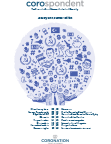
International Outlook - January 2017
INCREASED GLOBAL ACTIVITY
At the start of 2016, there was widespread anticipation of a looming global recession. At the lowest point in the first quarter, global growth had fallen to around 2%, compared to a long-run trend rate of 4%. The risk of deflation was rising and the economic outlook was dire.
Significant contributors to the prevailing mood of gloom were a stagnating Chinese economy (accompanied by fears of a sharp devaluation in the yuan) and a dramatic decline in the oil price, which saw a cut in capital spending in the energy sector. Deflation risks dominated Japanese and European bond markets, while the US Federal Reserve appeared set to slowly start hiking interest rates, despite the strengthening dollar and global economic weakness.
Since then, however, there was a marked upturn in global activity, and in recent months this has become surprisingly strong – at least when viewed through the bearish prism that has been in place since the knock to growth expectations following the global financial crisis. The narrowing of capital flows that pulled investment capital away from economic risk in 2015 reversed direction by mid-2016. Fears that a fragile US recovery would buckle and lead to a self-feeding global contraction gave way to renewed expectations for economic resilience. A further point is that in the US, politically driven interventions to buoy the economy prior to elections have historically often created a favourable equity investment environment during the third and fourth year of a presidential term. However, due to the divided government in place over this period and the tepid pace of cyclical recovery, this pattern failed to generate positive returns for the Dow Jones Industrial Average Index as 2015 moved into 2016. These headwinds abated during the course of 2016, giving way to tailwinds that fed a 13.4% gain for the index in the presidential election year.
This improved sentiment pulled money back towards oversold raw materials, energy and economically sensitive cyclicals. Collectively, this rotation back towards economic risk fed a broadening of flows into equities – led by sectors oversold and out of favour in 2015. Gold, energy, financials, transportation stocks and cyclicals all rallied strongly. In contrast, the safe havens favoured in 2015 (such as pharmaceuticals) lagged. Among selected US equities, many that were oversold in 2015 bounced back strongly in 2016, while others that were overbought by the end of 2015 faltered or lagged in 2016. The sector rotation also appears to have carried over into the start of 2017.
While the US dollar rose sharply in 2016 against currencies such as the British pound and Mexican peso, the tradeweighted US Dollar Index rose by only 3.6% in 2016. Over the year, the US dollar rose by 6.9% against the Chinese yuan and 3.3% against the euro, but was down 2.7% against the yen. Meanwhile, commodity-sensitive currencies that were deeply oversold in 2015 – such as the Russian rouble and Brazilian real – rebounded strongly in 2016, exaggerating the liquidity-sensitive rebound in their equity markets. Simultaneously, the apparent resilience of the US economic recovery fed a widening divergence among major market bond yields: ten-year yields rose in the US and Canada, while yields fell for the year in the UK, Japan and the eurozone.
Emerging equity markets, most of which fell sharply in 2015, began to turn around in 2016 – led by strong rebounds in commodity-sensitive markets such as Brazil, Russia, Chile, Argentina and SA. Mexico failed to benefit from this reversal due to a sharp drop in the peso/dollar exchange rate. Meanwhile, Shanghai China A-shares, which rose strongly in 2015, fell sharply in 2016. Taking a mediumterm perspective, over recent years both developed and emerging markets have been responding to the long-term effects of the global financial crisis, and their cycles have moved in different directions. The recovery of developed economies has been hampered by slow balance sheet repair (especially among banks) and the side-effects of quantitative easing (QE). This has resulted in lacklustre growth, persisting unemployment, low wage growth and discontented voters. By comparison, emerging economies implemented strong stimulus programmes between 2008 and 2010. These proved so effective that certain economies – including China, Brazil and Russia – had to change course in 2011 and 2012. As a result, they too experienced economic downturns and currency weakness in the years that followed. As we enter 2017, much will depend on how these issues are managed.
Considering the global economy collectively, the latest forecasts estimate the growth rate in global activity to be 4.4% (compared to 2016’s low point of 2.2%). This is the highest forecast by economists since April 2011 and is also supported by other data sources, such as the Goldman Sachs Global Leading Indicator (which has reached its highest point since December 2010). As to be expected, heightened global activity has also seen a steady rise in headline inflation in almost all major economies, albeit small and largely driven by the partial recovery in oil prices. US wage inflation has also been trending upwards for some time, and will result in higher consumer prices in that economy.
TRUMP’S ECONOMIC APPROACH
On 20 January 2017, Donald Trump became the 45th US president, with Republican control of both houses of Congress. He is expected to propose a range of stimulus measures designed to promote the growth of the US economy, including tax cuts for both individuals and businesses, and several infrastructure spending programmes. He may also implement a number of reforms, including the easing of energy production restrictions (thereby encouraging the use of various different energy sources) and revisiting existing banking regulations. In doing so, he has said that he is targeting a growth rate of between 3.5% and 4%. Consensus expectations are for real GDP growth to improve to 2.5%.
It seems that the defining feature of Trump’s economic approach – as proposed by his advisers – is likely to be a rebalancing of the policy mix. This will see the US move away from an exclusive reliance on easy monetary policy to jump-start the US economy towards a more balanced reliance on the deregulation of economic activity and on expansionary fiscal policy. Trump believes that this will significantly buoy the performance of the US economy. In fact, we cannot rule out the possibility of real US GDP growth doubling in the next couple of years, which will also drive up equity valuations and underpin dollar strength. Certainly, investment markets are buying into these promises.
EUROPE AND UK
In Europe, the outlook is less promising. In particular, the weakness of the European Central Bank’s QE programme and its decision to lower one of its key policy rates into negative territory have proved to be significant stumbling blocks to economic recovery. Unemployment remains high across the continent, while income growth is weak. Consequently, we have seen the emergence of fervent populism and nativism, with both far-right and far-left political movements growing. With upcoming elections in the Netherlands, France and Germany this year, there is the risk of further disruptive political outcomes.
In the UK, real GDP growth had averaged 2.3% since 2013, aided by gradual balance sheet repair and supported by expansionary QE measures. Unlike in the eurozone, deflation has also not been a concern. However, it still remains to be seen how Brexit will be negotiated, and what this will mean for the UK’s access to the EU market and international investment. To date, the brunt of the fallout has been borne by the British pound, which has seen a significant decline in value. Once formal Brexit negotiations begin, it could easily fall further. This has the potential to push up import prices and filter through to CPI, undermining real wage growth. In turn, a reduction in consumer spending (which makes up 65% of British GDP) will negatively impact economic growth. In 2017, growth of 1.4% and a CPI rate of 2.5% are expected.
CHINA
Within emerging markets, China remains the largest – and the largest global buyer of commodities. Having embarked on a new round of credit expansion from the start of 2014, the Chinese economy could see yet another period of inflation. This could threaten the country’s sought-after shift to more consumption-led growth, and would also hold significant repercussions for other emerging markets, especially the commodity producers and China’s neighbouring economies. To date, excess credit growth has been largely confined to the Chinese financial and government sectors, but there are concerning indications that the broader economy may soon be impacted. This includes a series of mini-bubbles in equities, the housing market and then commodities. In addition, producer prices have started to rise for the first time in four years. The country will need to address these issues decisively to minimise the impact on its economy, but how it will go about doing so remains to be seen.
EXPECTATIONS FOR 2017
As we have highlighted before, far lower emphasis has been placed on valuation in the recent years of below-trend economic growth. Rather, stocks with low levels of volatility gained favour, outperforming more cyclical counters. Often, this was due to their bond-like qualities rather than their fundamental attributes – and it made these stocks expensive. Such valuations are likely to prove unsustainable, and are already starting to reverse. Furthermore, anticipated fiscal stimulus in the US under the Trump administration will support those parts of the market that have lagged ‘safe haven’ assets. In particular, the banks should continue to perform well. Being better capitalised now than they were in the wake of the financial crisis, these entities have also generally reduced the volatility of their earnings streams (despite operating under heightened regulation and in an environment of exceptionally low interest rates).
The sharp drop in commodity prices from mid-2014 into early 2016 weighed heavily on global equity indices, capital investment, and the economies and currencies of commodity-sensitive countries. Due to the lag between investment and production for most nonagricultural commodities, it takes time for lower prices to reduce supply, or for a price rebound to increase production. Energy inventories remain high, and the scope of pledged 2017 oil production cutbacks remains uncertain. However, the supply headwinds created by the sharp drop in energy sector capital investment from 2014 through 2016 will more than offset the near-term impact of a modest 2017 rebound in drilling and spending. It is the increasing recognition of this reality that fuelled the sharp year-on-year rise in oil and natural gas prices in 2016, and modest rebounds in other raw materials (where prices had fallen below the cost of production by early 2016).
The global economy and markets enter 2017 on considerably firmer footing than last year. The outlook has improved for developed economies as growth momentum has picked up in recent months and risk assets across the board have continued the rally sparked by Trump's unexpected victory. But far more importantly, markets are exhibiting that the election of Trump as the president of the US – as divided as public opinion on him may be – will make a fundamental impact on the performance of the US economy. A faster growing US is positive for the global economy, but the impact outside the US will be limited until 2018.
The outlook has also improved for emerging markets, but in the near term it is likely that there will be further capital outflows due to a stronger dollar and rising interest rate risk, imposing financial stress.
A caveat to be borne in mind is that an ‘America First’ policy from Trump will add significant further global stress, as will a closer ‘friendship’ between the US and Russia based on common economic and security interests, which will be to the detriment of Europe.


